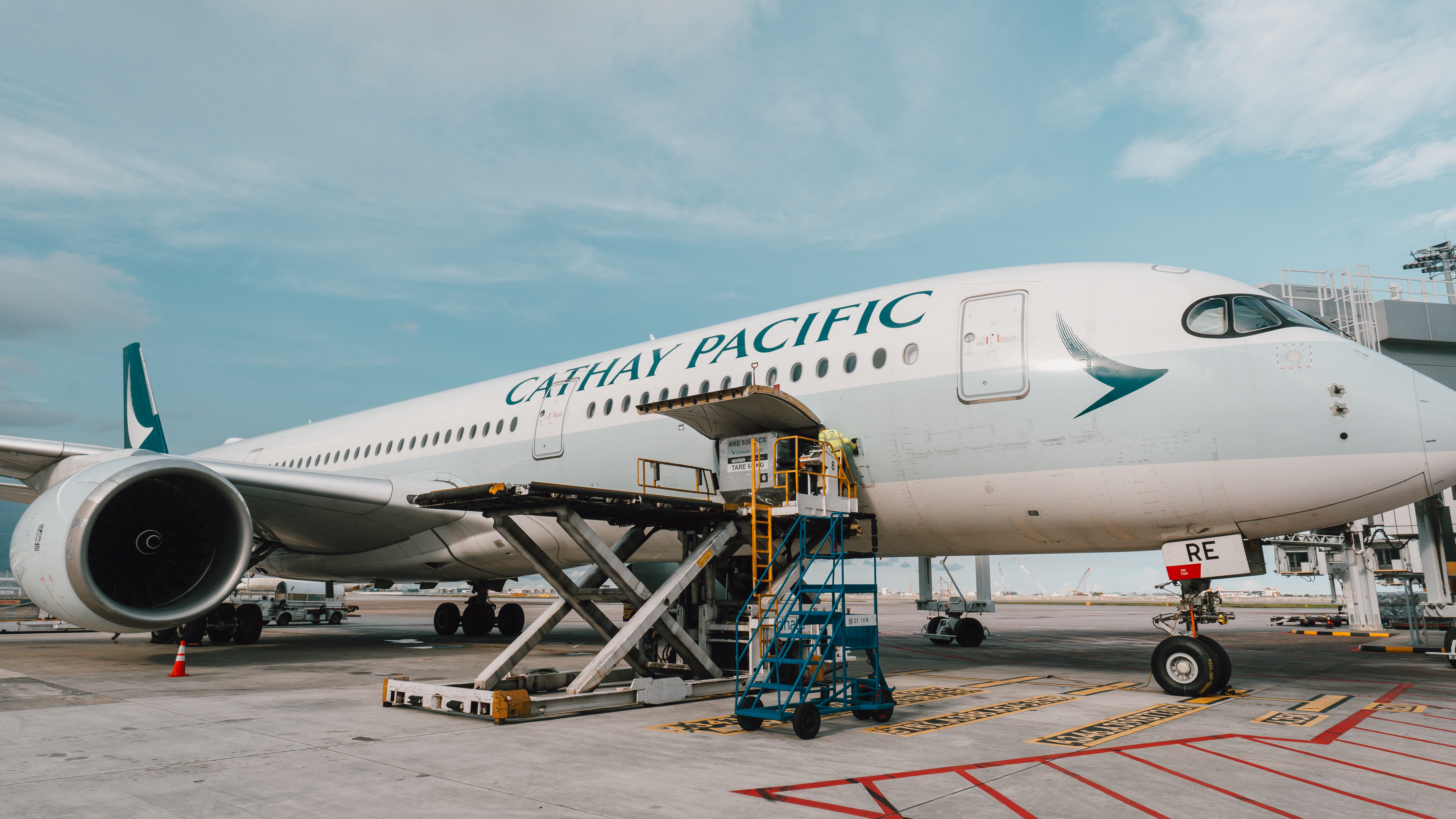


Arriving at an airport typically marks the end of a traveller’s journey, but for the aircraft that they were just on, it could be one of a few stops on its busy daily schedule. Having just flown a few hundred passengers safely to Changi Airport, the plane now needs to undergo a turnaround to get it ready for its next flight.
Depending on the airline’s schedule, aircraft turnarounds can be speedy affairs. With close to a thousand flight movements at Changi daily, boarding gates are a precious resource. Speed and efficiency are king on the ground, often leaving ground staff with only a few hours to get the plane ready for its next trip. Changi Journeys gives you an insider’s peek to see how different teams work together like clockwork to meet this tight timeline.
Touchdown
When an aircraft lands at Changi, teams are already on standby at the assigned bay to receive it. This small army of airport workers includes ground handlers, aerobridge operators, cleaners, inflight catering staff, aircraft engineers, and technicians – all ready to move in once the plane is safely docked.
On the ground
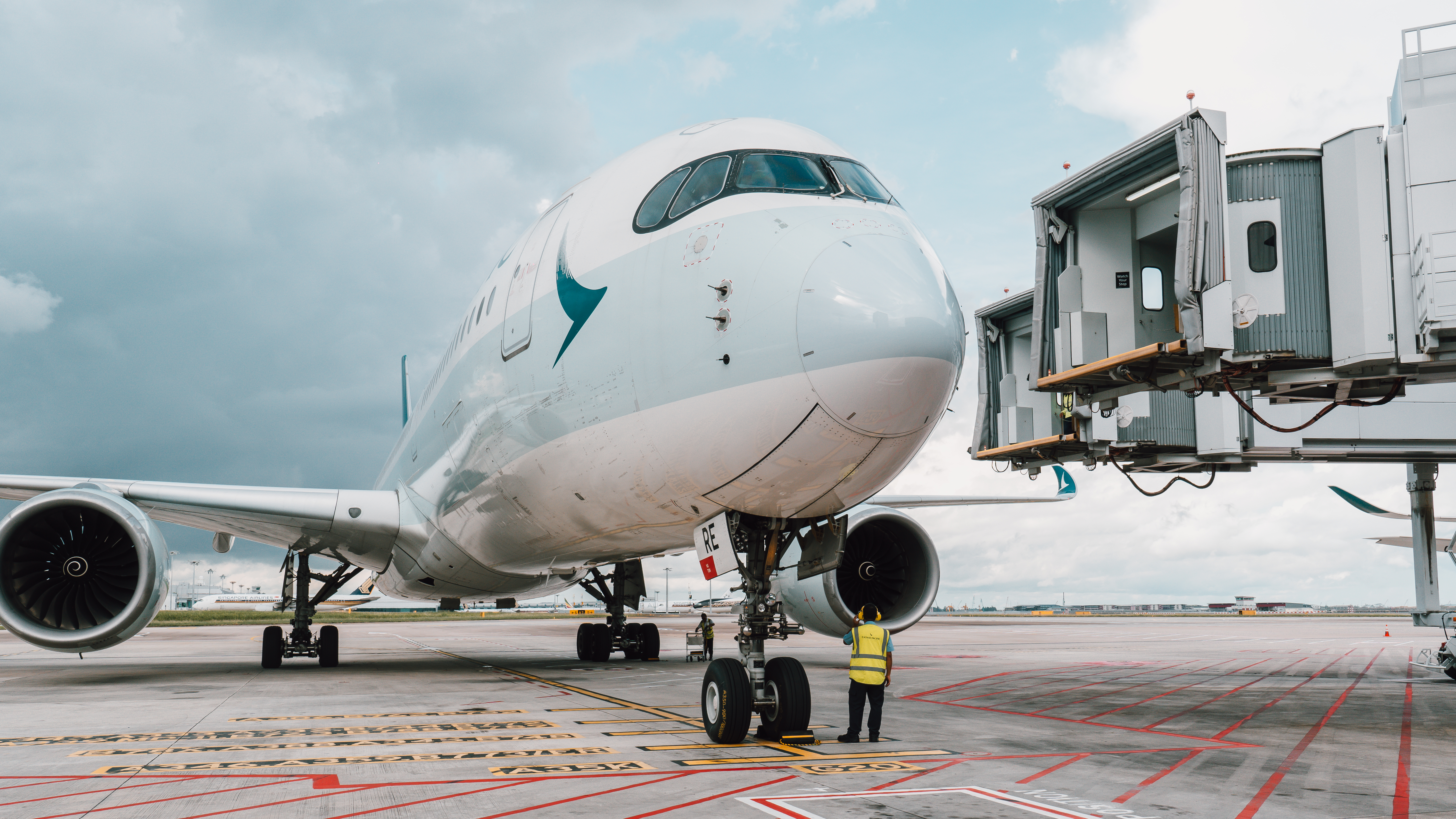


Ground handlers ensure that the plane has reached a complete stop before proceeding with disembarking and unloading.
Once the aircraft taxis to a stop, ground handlers place chocks at its wheels as a safety precaution. This then signals the aerobridge operator to proceed with docking, allowing passengers to disembark into the terminal. As part of ongoing efforts to improve manpower productivity through innovation, this step is handled by Changi’s automated Passenger Loading Bridge (PLB) at some aircraft bays.
At this point, other ground handlers move in to begin unloading baggage and cargo from the plane. Using specialised lifts and vehicles, luggage that has been checked-in is promptly brought down from the aircraft cargo hold and shuttled to the terminals to be reunited with arriving passengers. Autonomous vehicles like the Auto-Dolly, which is currently being trialled, may help to further optimise this process going forward, with their ability to function without operators.
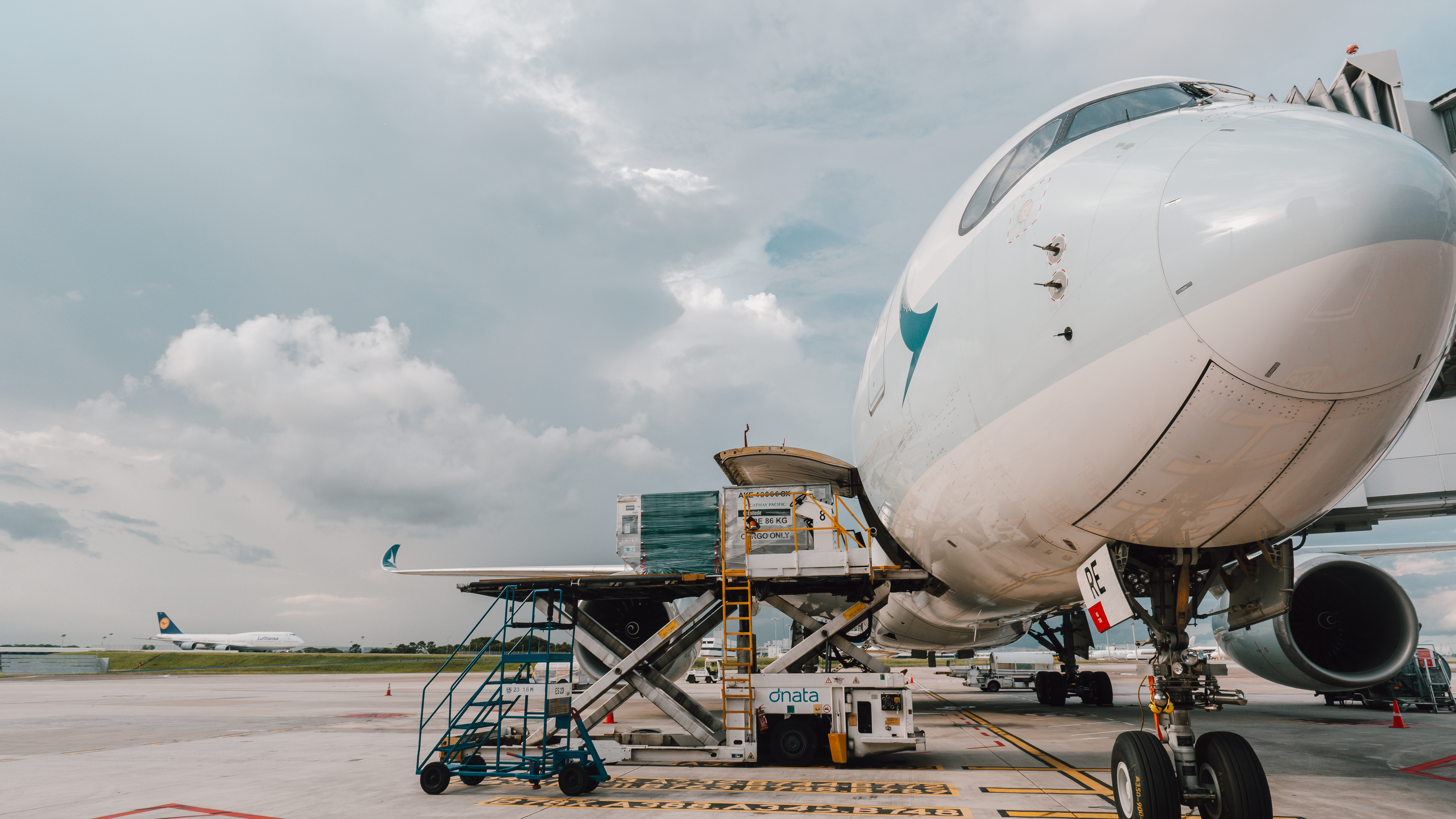


Joint container pallet loaders allow ground handlers to access cargo holds and load passenger baggage onto waiting tractors.
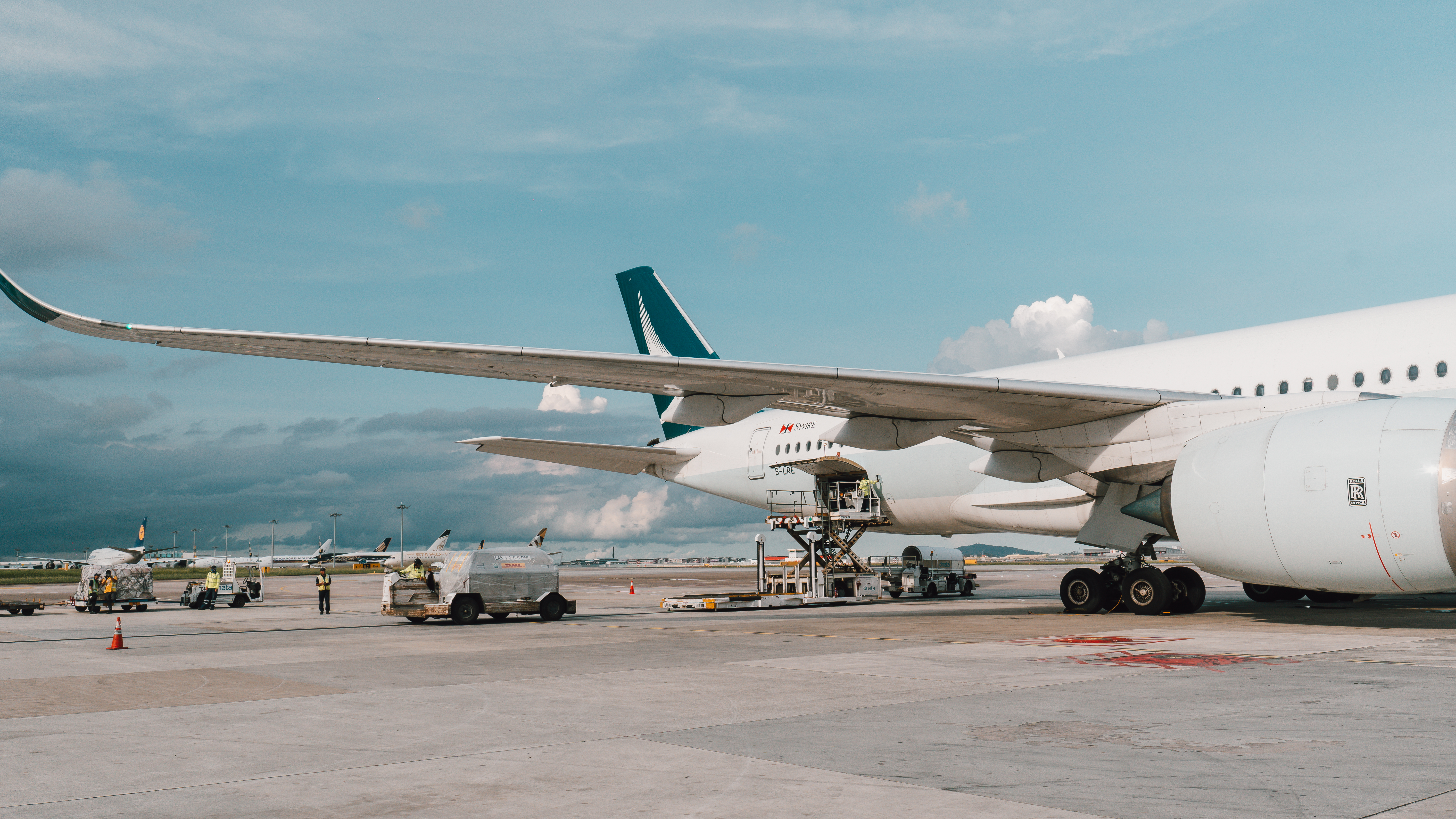


Once offloaded, ground handlers transport the baggage to the terminal’s baggage handling system to be reunited with arriving passengers.
In preparation for the plane’s next journey, the team focusing on maintenance and disposal services move in next to carry out their tasks. A refuelling truck taps into the underground fuel storage tank located across all of Changi’s aircraft bays to uplift jet fuel into the aircraft. At the same time, separate trucks remove sewage from the previous flight and pump fresh water into the aircraft.
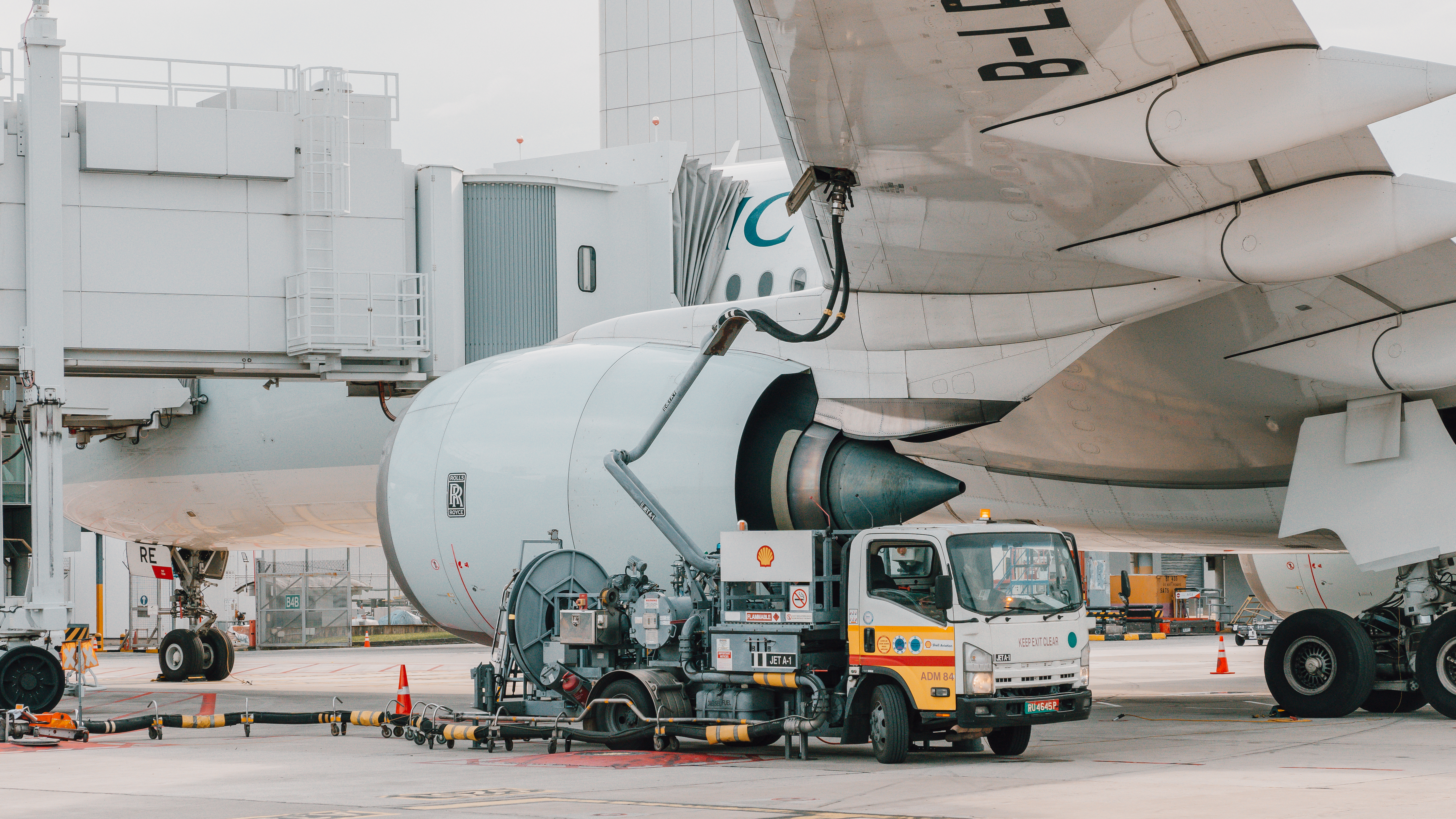


Refuelling trucks tap into underground storage tanks to pump jet fuel into the aircraft.
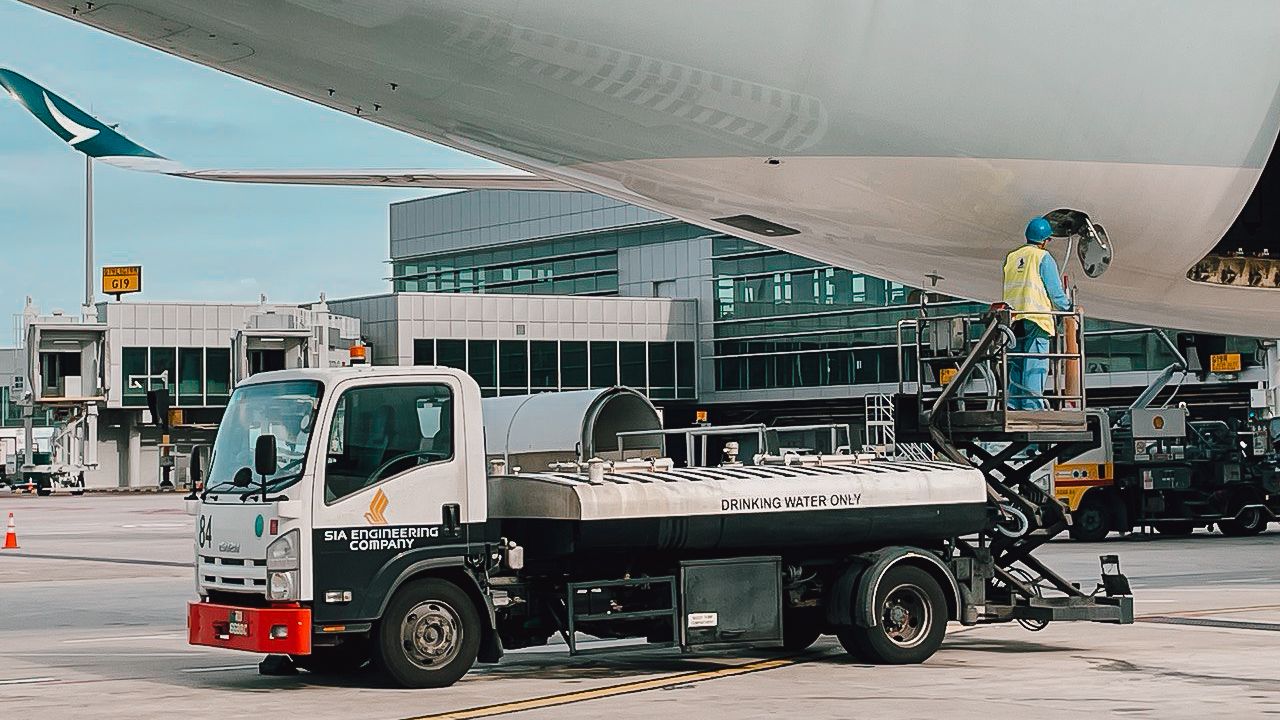


The aircraft’s freshwater system is replenished before the start of each flight.
Inside the aircraft
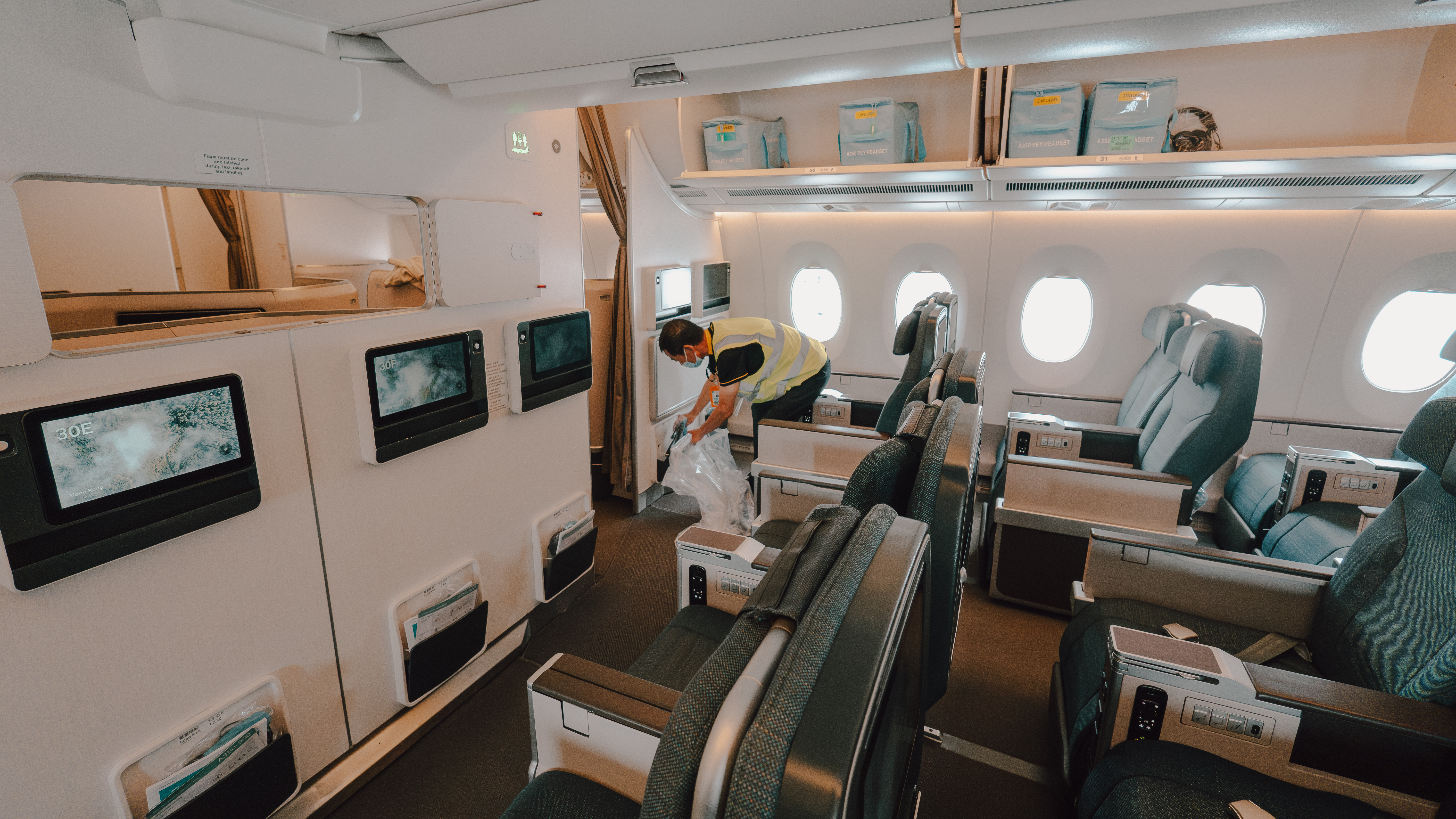


All loose trash left behind by passengers is disposed of and the rest of the cabin thoroughly cleaned.
Meanwhile, inside the aircraft, cleaners move in swiftly once all the passengers and crew members have disembarked from the plane. Going row to row, they clear the cabin of waste items such as empty water bottles, used tissues, and discarded packaging. This is followed by a sanitation sweep – used blankets, pillowcases, and headrest covers get replaced with fresh ones, while the cabin floor gets vacuumed and toilets washed. Toilet paper, napkins, and other amenities are all replenished according to each airline’s requirements, which may also include gifts or freebies depending on the flight and the cabin class.
The in-flight catering team enters next, wheeling in trolleys of inflight meals and drinks. After restocking the aircraft’s galleys for the next leg, they make their exit, bringing with them the previous flight’s food waste for disposal.
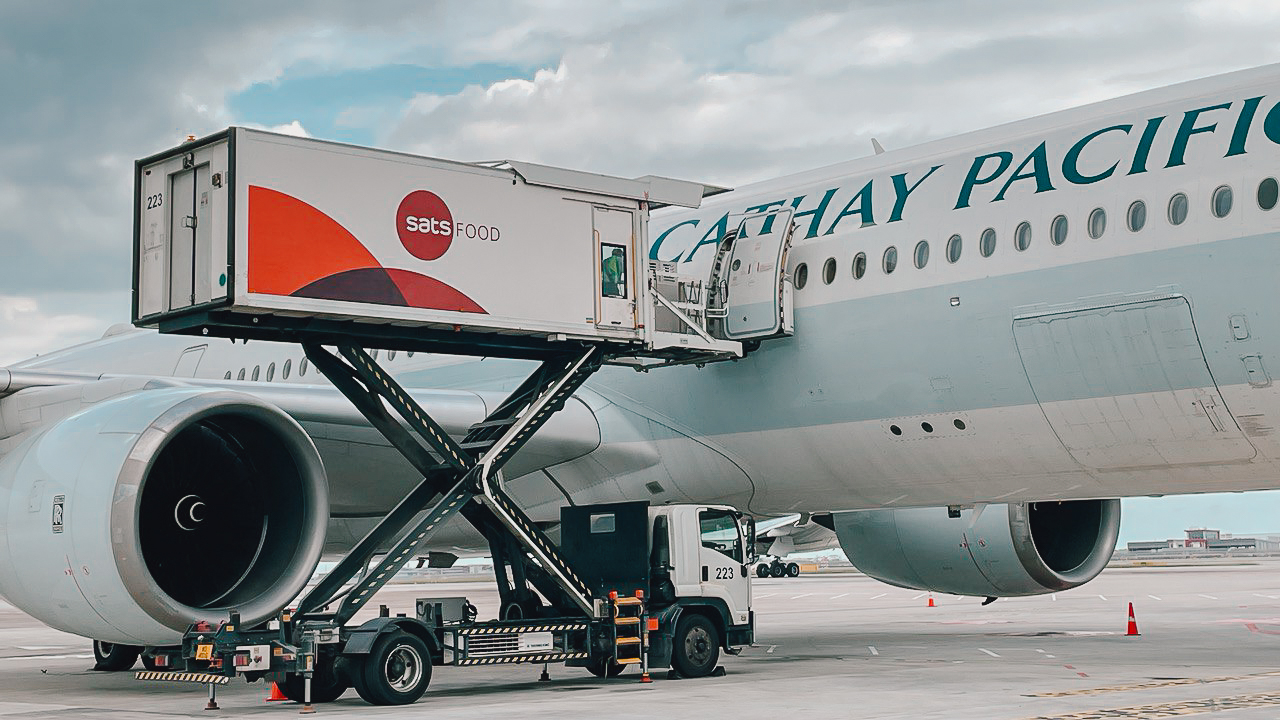


In-flight meals are lifted straight to the galley, reducing the need to push trolleys down the length of the cabin.
While this is all happening, airline technicians work to address any issues that were logged during the previous flight. These can range from mechanical parts like loose tray tables, to electronic components like faulty in-flight entertainment systems. This is rounded off with an overall diagnostic of the aircraft’s systems to ensure that everything is in working order and ready for the next flight.
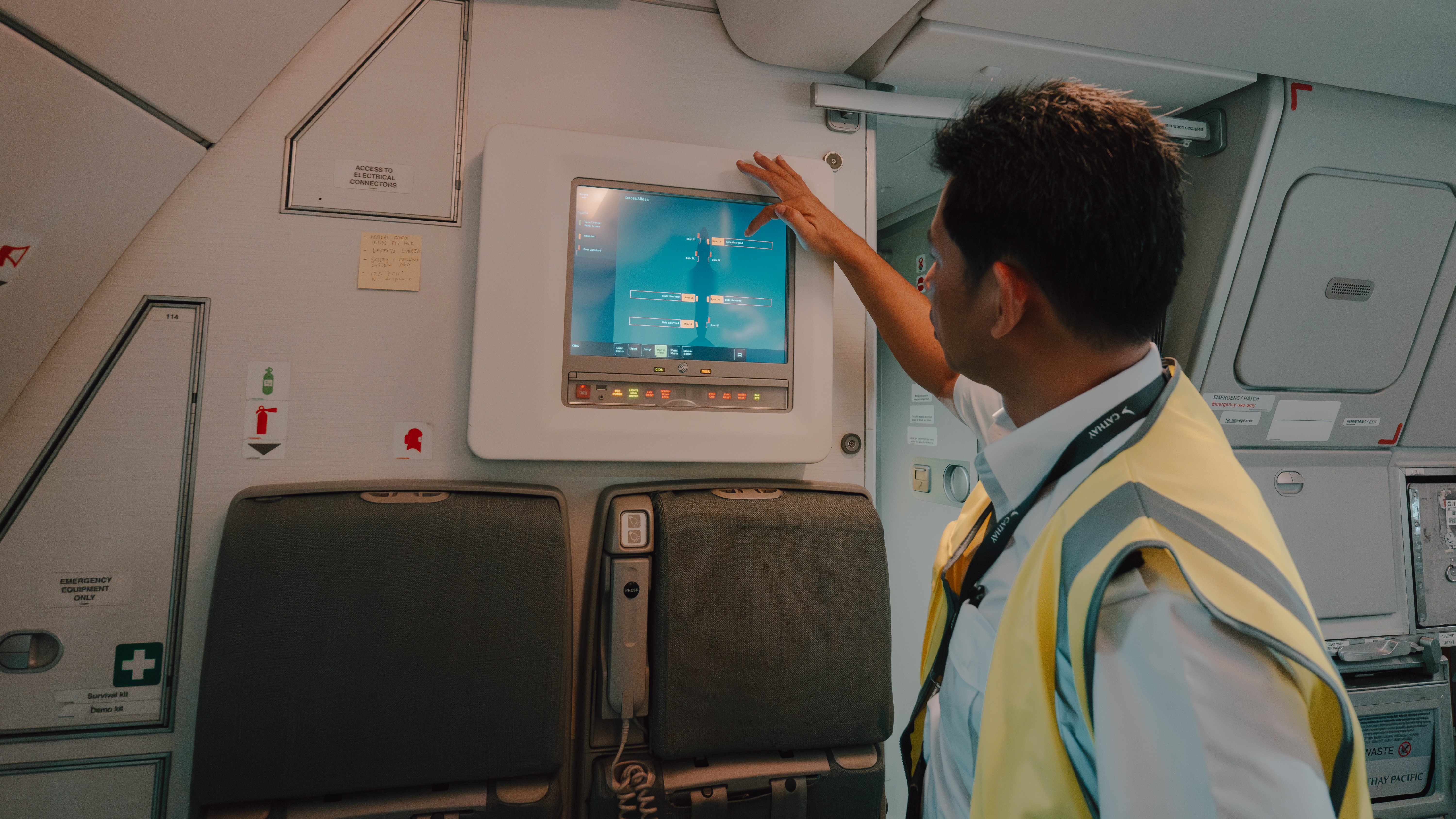


Airline technicians run checks to ensure that systems will be running smoothly for the next flight.
Final Preparations
Typically, around 60 to 90 minutes before the flight’s scheduled time of departure, the cabin crew arrives to begin final preparations for the boarding of passengers. Having been briefed by the catering team on the number of meals they have been assigned for the flight, they make sure everything is neatly arranged in the galleys and easily accessible for the first meal service.
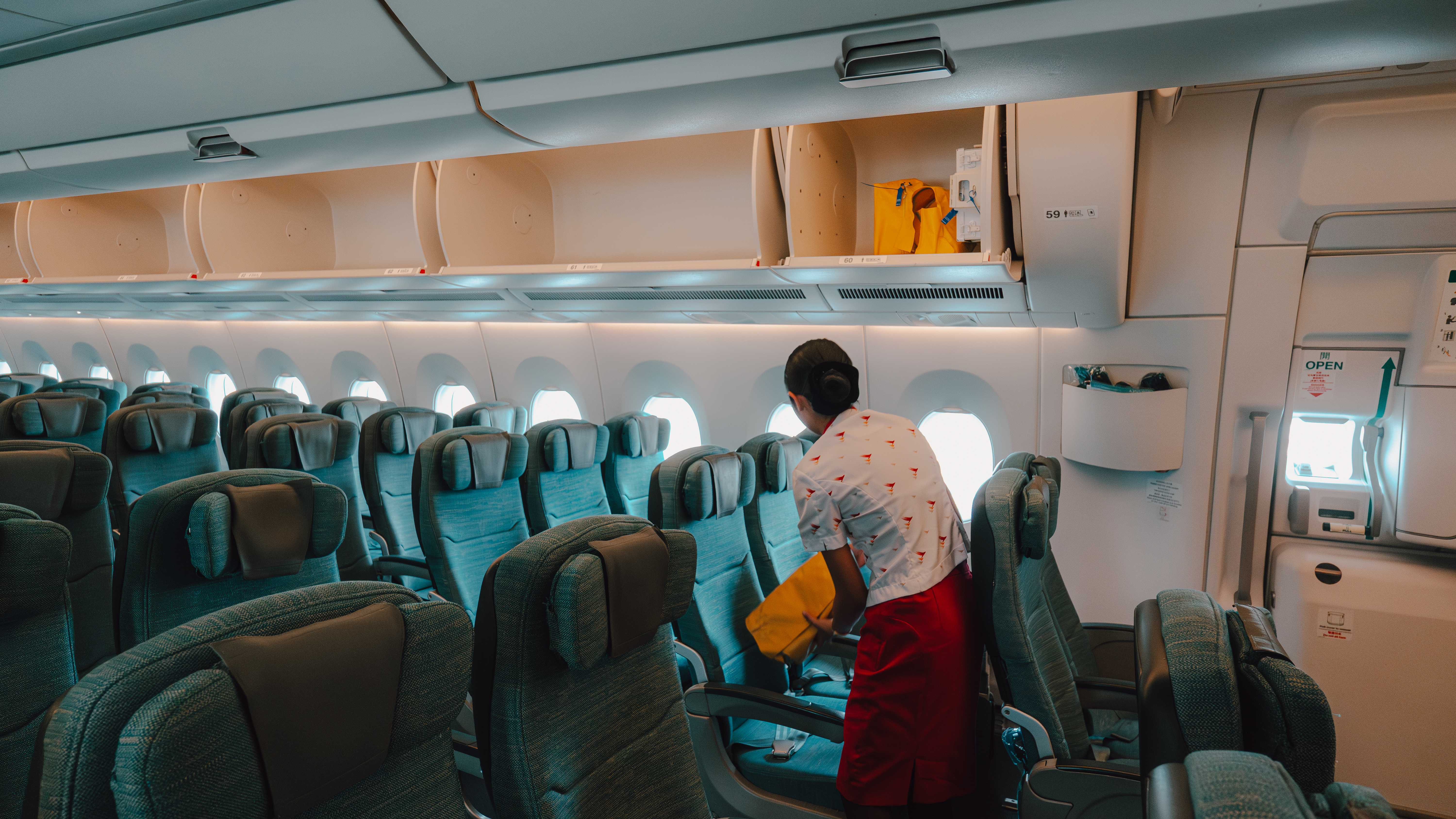


Upon their arrival, the cabin crew begins final preparations to get the plane ready for boarding passengers.
On the ground, with the completion of refuelling and offloading, ground crews conduct a round of safety checks on all the equipment to make sure everything is in order. They are joined by the flight’s First Officer, who personally inspects the plane’s body, wings, and wheels for any visible signs of stress or damage. Once this is completed, the captain signs off on the process, and the plane is deemed airworthy and safe for flight.
Departure
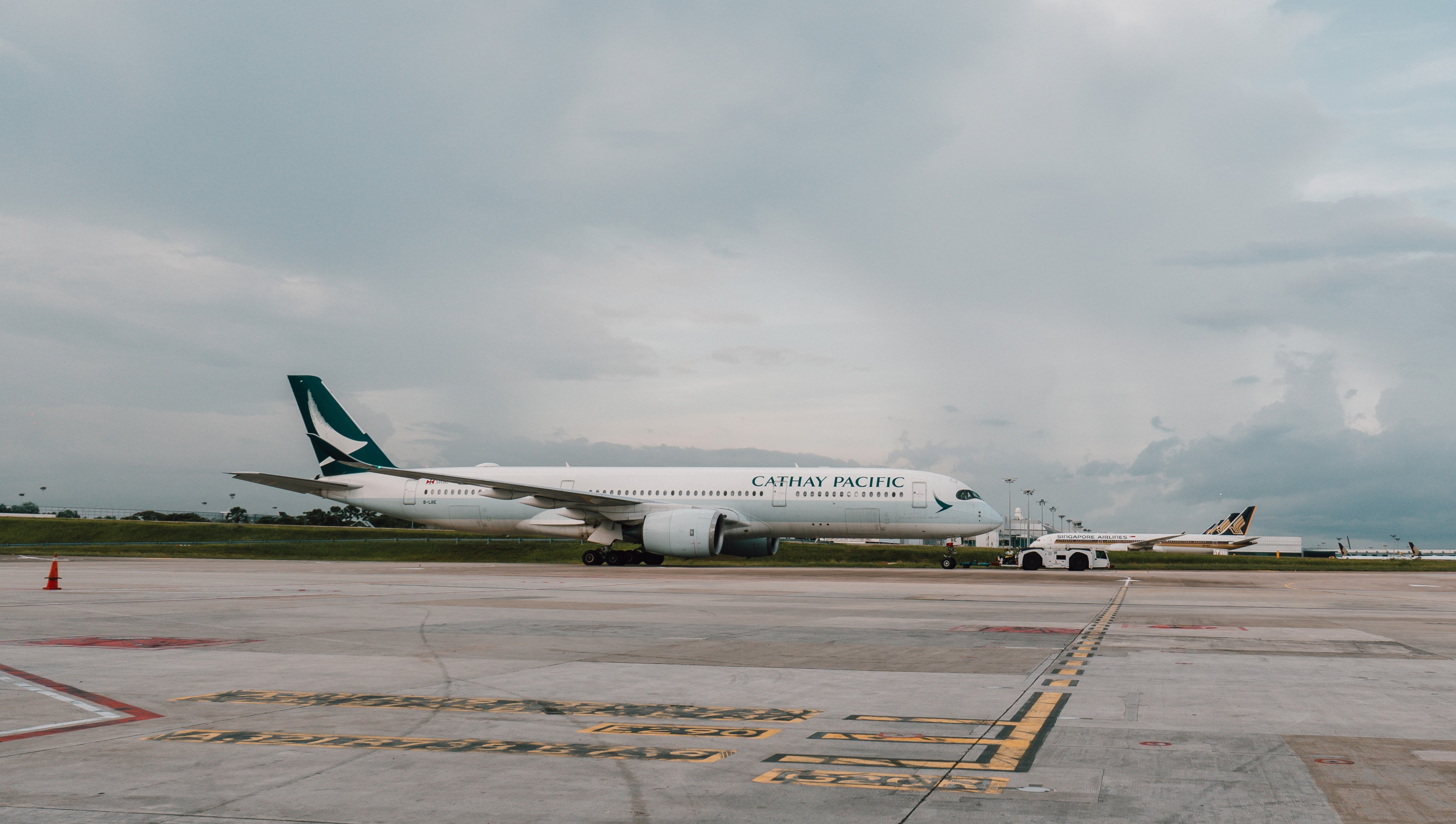


Since planes do not have reverse gear, a tow tug pushes the plane back from the aircraft stand towards the taxiway.
As passengers begin to board the plane, their checked-in luggage along with any other pieces of cargo are brought onto the tarmac and loaded into the hold using the same lifts and vehicles. Rest of the ground crew remain on standby as they await clearance from the control tower. Upon receiving the go-ahead, the plane is pushed back from the bay by a tow tug to its correct taxiing position.
With the plane now taxiing towards the runway, the different crews head off and make their way to their next assignment, marking the end of yet another successful aircraft turnaround.
Want to see all of this unfold before your eyes? Check out a video montage of the aircraft turnaround below.
Changi Journeys thanks Cathay Pacific for facilitating this story.
Other Articles
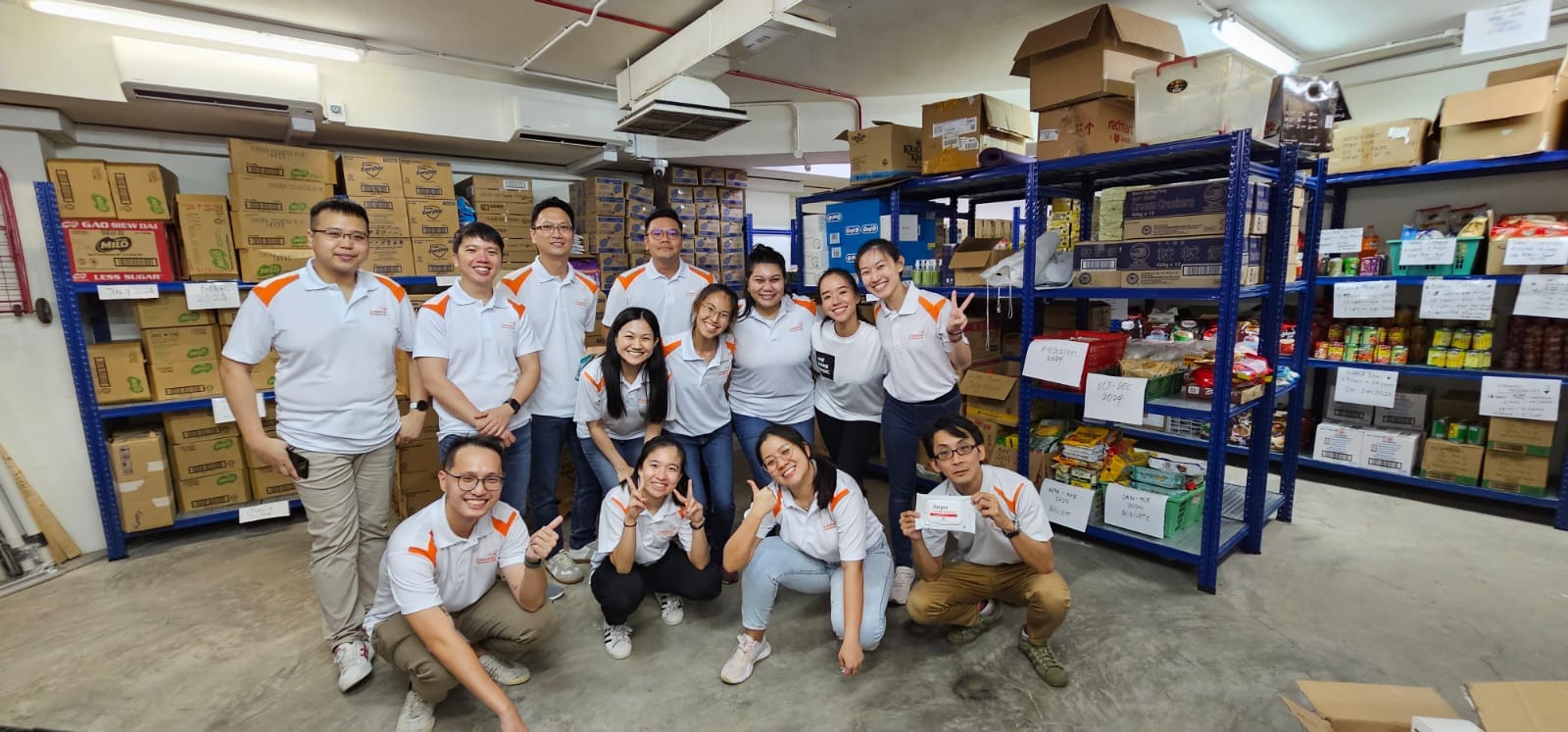
Cultivating Changi Airport Group’s heart for volunteering
Learn how Changi Foundation worked together with Metta Welfare Association to co-create volunteering initiatives aligned with employee interests, to encourage greater volunteerism at CAG.
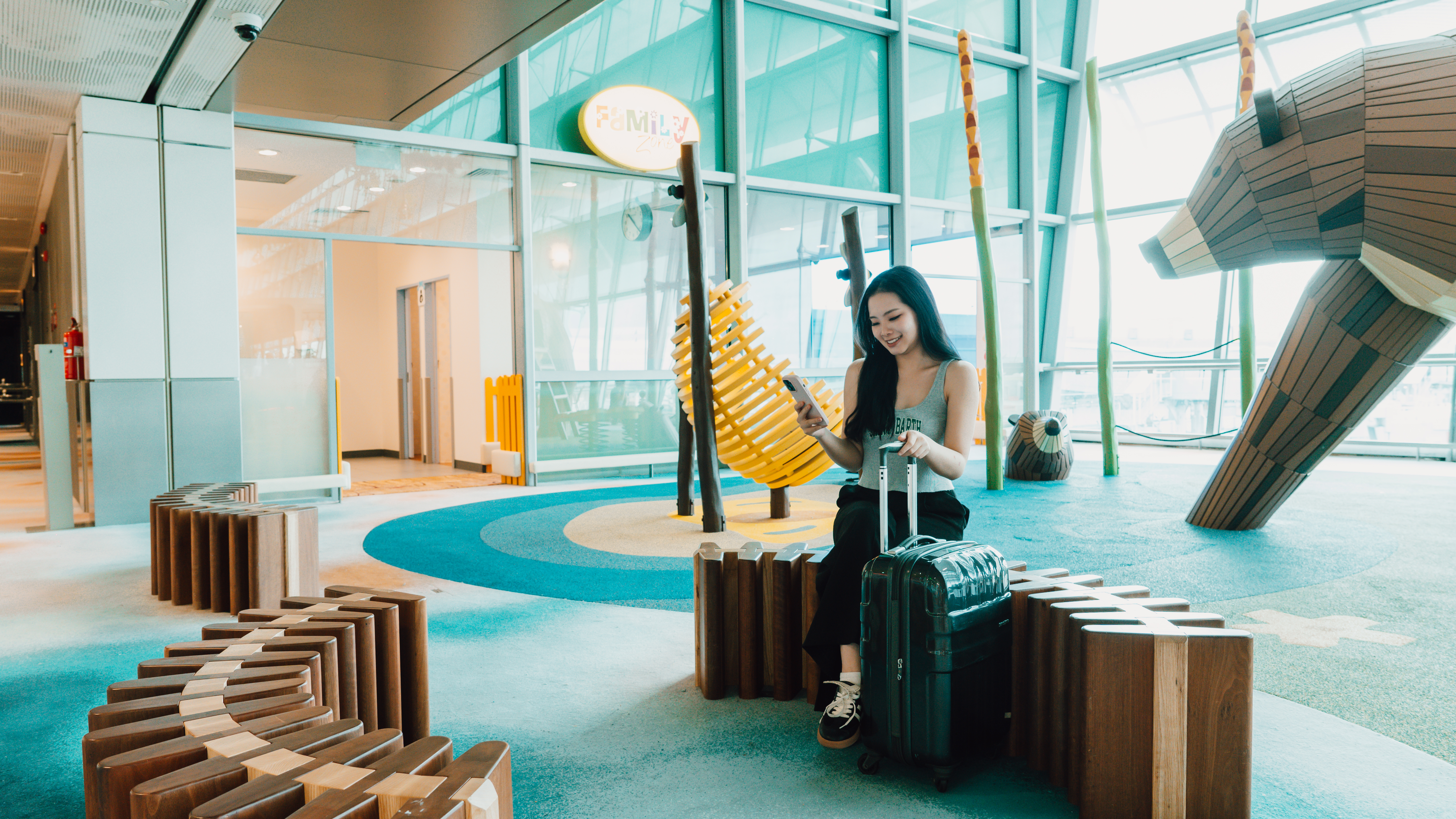
Preserving a piece of Changi’s history with wooden benches
Follow the journey of an old set of wood panel fins from Terminal 2. See how CAG worked with furniture makers to upcycle them into a functional installation that looks at home in the newly-opened terminal.
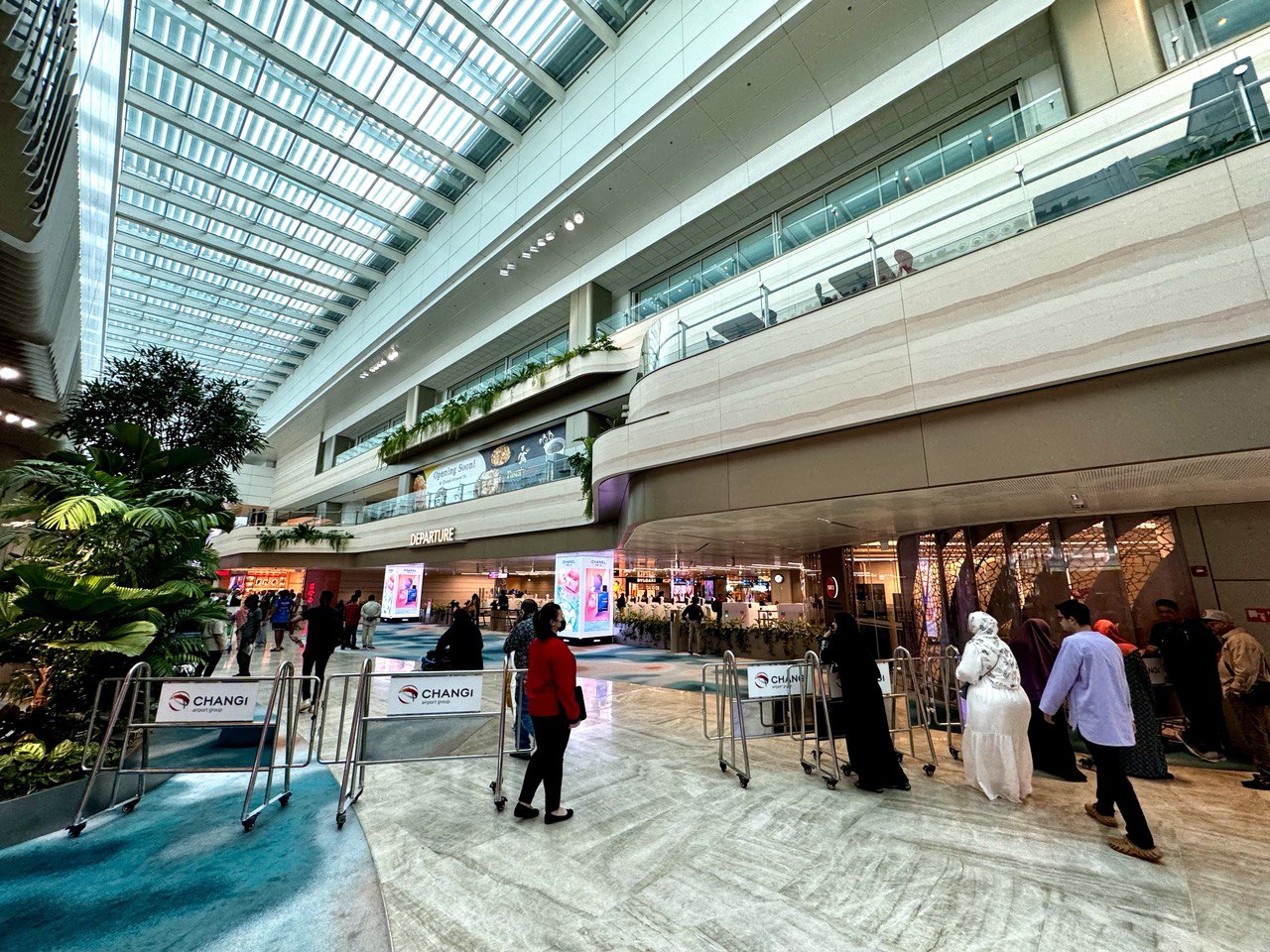
On LinkedIn@ChangiAirport
As Hari Raya Haji approaches, find out more about the planning and facilitation that CAG puts in place for this annual pilgrimage.


